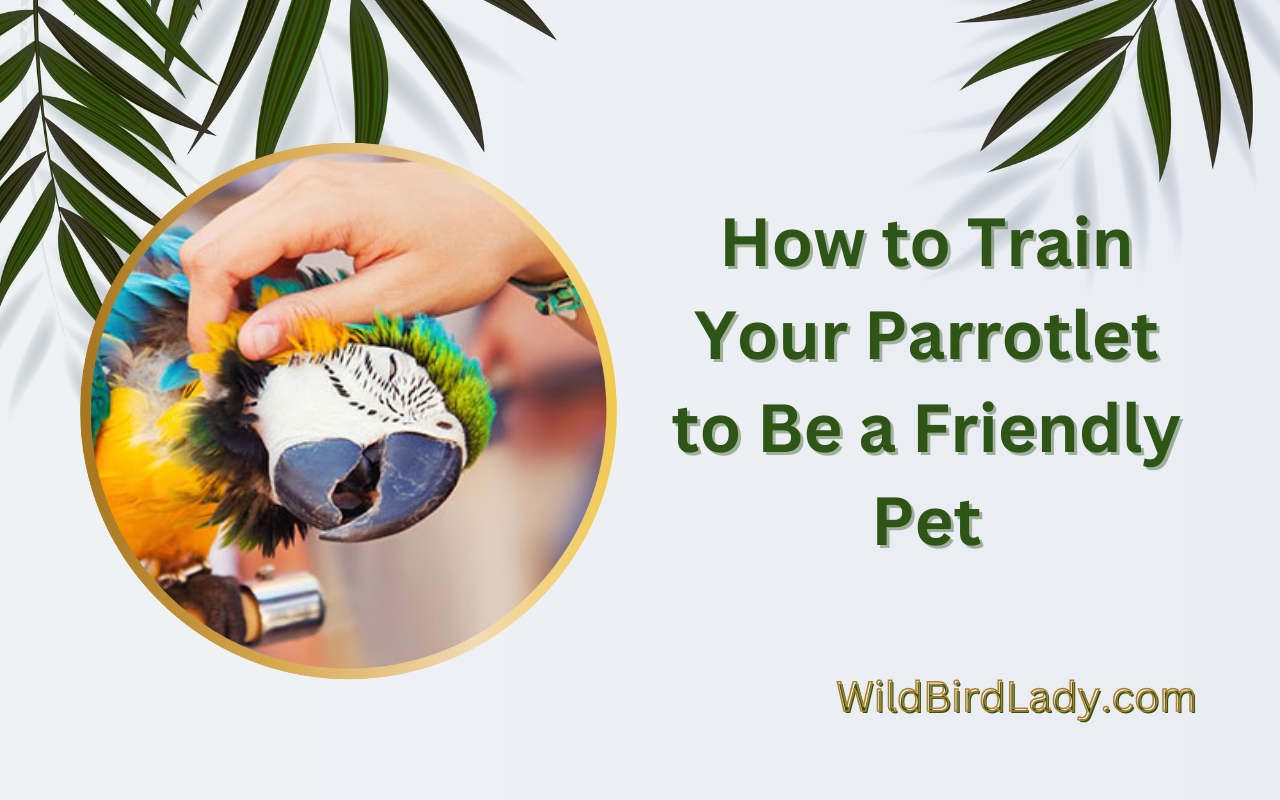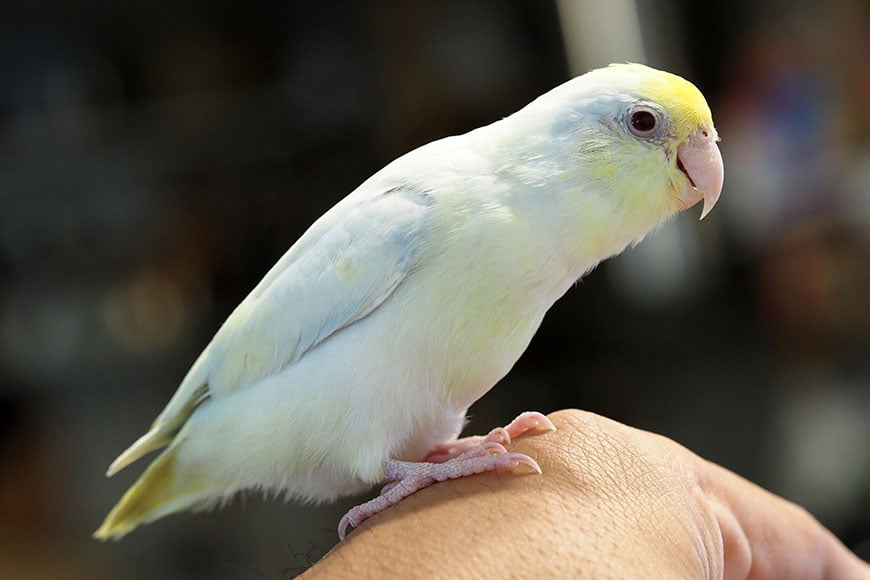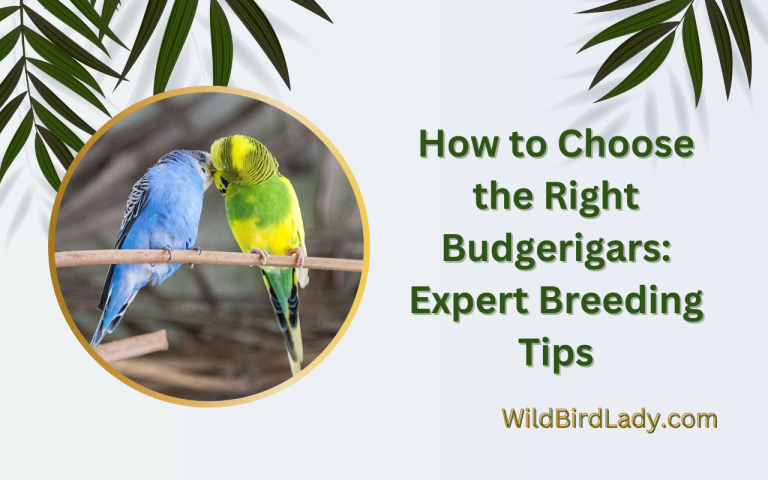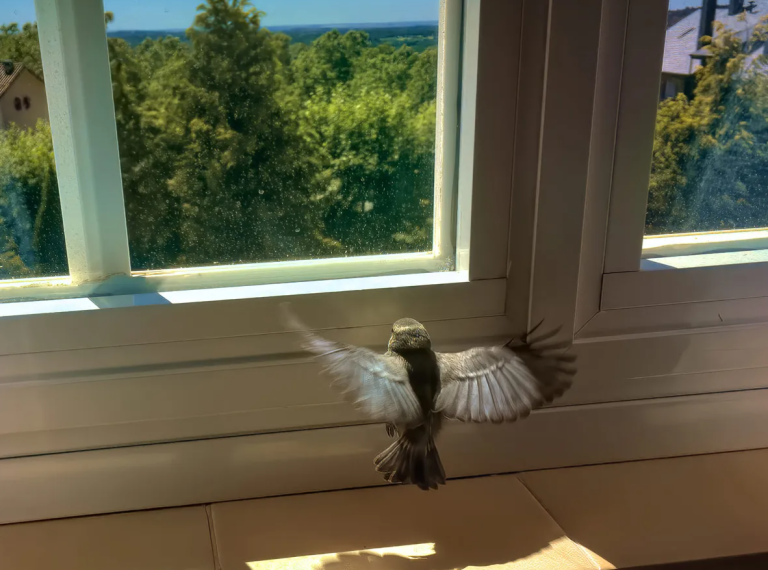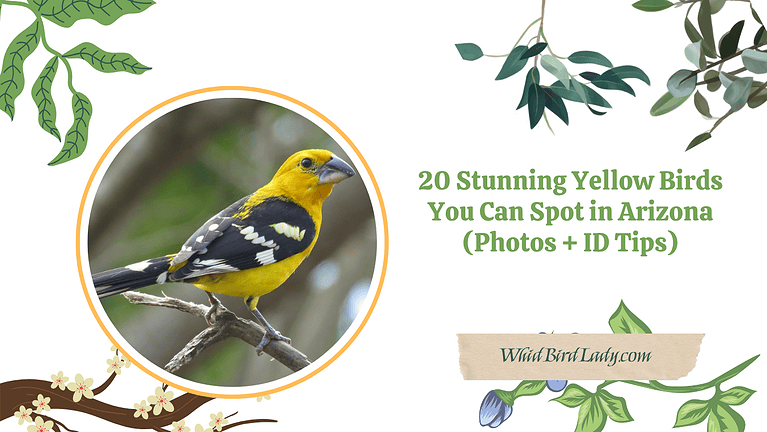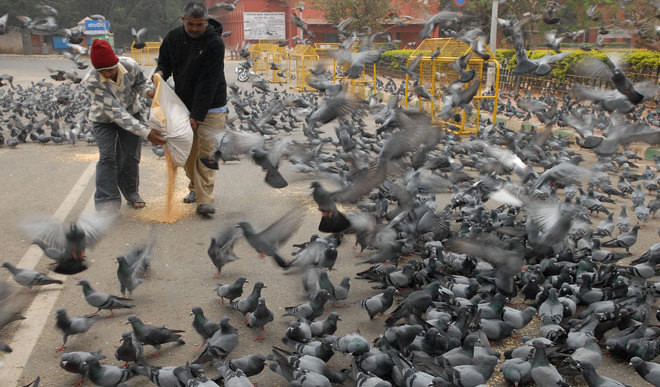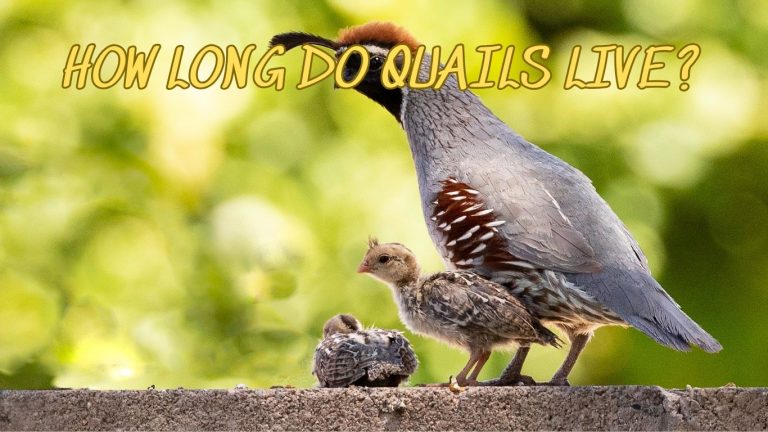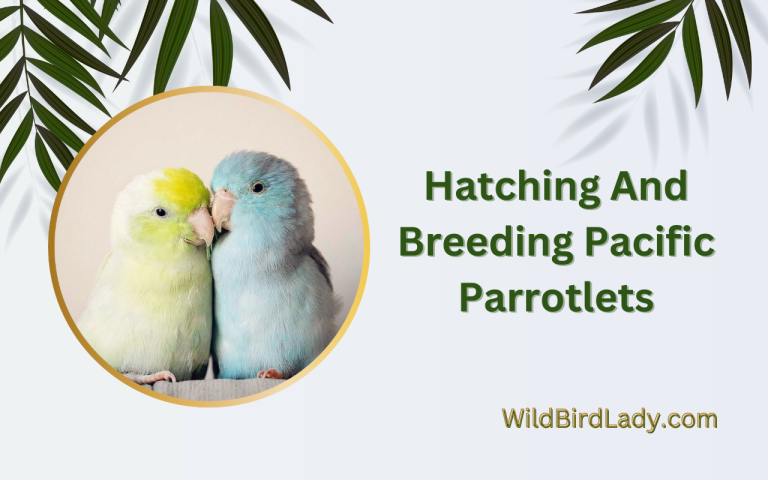How to Train Your Parrotlet to Be a Friendly Pet
To train your parrotlet to be a friendly pet, start by spending quality time with it and using positive reinforcement techniques. In addition, provide your bird with a spacious and stimulating environment and offer it plenty of opportunities to socialize with humans and other birds.
By following these tips, you can help your parrotlet become a happy and friendly companion. Parrotlets are small, intelligent and active birds that make great pets for bird lovers. These birds can be easily trained to be friendly and affectionate with humans, although they may need some patience and dedication to get there.
In this article, we will explore some tips and tricks for training your parrotlet to be a friendly pet. From socialization and playtime to positive reinforcement and basic training, there are many ways to help your bird thrive in a domestic environment. Whether you are a seasoned bird owner or a newbie looking to adopt a parrotlet, this guide will provide valuable insights and recommendations to help you build a strong bond with your feathered friend.
Understanding Your Parrotlet
Understanding Your Parrotlet’S Behavior
Parrotlets are one of the most adorable bird species due to their playful nature and striking colors. If you want to keep one as a pet, it’s crucial to understand their behavior to ensure they feel comfortable and friendly within your home.
Below are some key points to help you understand your parrotlet’s behavior better:
- Parrotlets are social birds and require a lot of attention and interaction from their owners.
- They are high-energy birds and need lots of mental and physical stimulation from toys, interaction with other parrotlets, and daily playtime outside of their cages.
- Parrotlets are intelligent and can be taught tricks, and can also learn to mimic sounds and words.
Bonding With Your Parrotlet
It’s essential to create a strong bond with your parrotlet to develop a friendly relationship with them. Bonding requires patience, time, and consistency. Here are some tips to help you bond with your parrotlet:
- Start by spending time next to your parrotlet’s cage and talk to them in a calm and soothing voice. Try to sit next to them for at least 30 minutes a day.
- Gently offer your parrotlet treats and favorite foods; this will help them associate you with positive reinforcement.
- Once your parrotlet feels comfortable and safe, you can start offering your finger for stepping up and taking them out of their cage.
Communicating With Your Parrotlet
As social and intelligent birds, parrotlets thrive on communication with their owners. They can learn many words and phrases and can quickly pick up on your tone and body language. Here are some tips to help you communicate effectively with your parrotlet:
- Use positive reinforcement. Parrotlets are more receptive to positive feedback; this can include treats, verbal praise, and cuddles.
- Parrotlets respond well to a calm and soothing voice, so try speaking to them in a soft tone.
- Establish vocal cues for familiar commands, such as offering a specific food or telling them to come out of their cage.
Understanding your parrotlet’s behavior, bonding with them, and communicating effectively is crucial to ensure a healthy, friendly relationship with your pet bird. Follow the tips mentioned above, and your parrotlet will quickly become a valued member of your household.
Basic Training Techniques
Training your parrotlet to be a friendly pet can be a rewarding experience for both you and your feathered companion. Can help establish trust and enable you to bond with your pet bird. Here are some effective training methods to try with your parrotlet:
Positive Reinforcement: Rewards And Treats
Using positive reinforcement with rewards and treats can help encourage good behavior in your parrotlet. It involves rewarding your bird with treats for exhibiting desirable actions such as stepping up on your hand or responding to your commands. Some popular rewards include bird seed, nuts, and fresh fruits.
Remember to use treats in moderation, and only reward your bird for good actions.
Clicker Training
Clicker training is a simple yet effective method used to train birds. It involves the use of a small clicker device to make a clicking sound every time your parrotlet exhibits a desirable behavior. Associating the clicking sound with a reward can help establish a positive connection in your bird’s mind.
This technique can be used for a variety of actions such as stepping up or learning tricks.
Target Training
Target training is another useful technique you can use to train your parrotlet. It involves using a target stick to direct your bird to a specific location or object. This can help your bird to learn basic commands like “come here” or “step up” and develop better coordination.
You can use treats to encourage your bird to follow the target stick.
Step-Up And Step-Down Training
Step-up and step-down training helps your bird become comfortable with being handled and coming out of its cage. It involves using gentle pressure to encourage your parrotlet to step onto your hand or step down onto a perch. This training can help your bird to become more comfortable and less fearful.
Remember to never force your bird to do something it doesn’t want to do, and be patient with your training.
Training your parrotlet requires time, patience, and dedication. Using these basic training techniques can help establish trust and a deeper bond with your beloved pet. Experiment with different methods and find what works best for you and your feathered friend.
Advanced Training Techniques
Advanced Training Techniques For Parrotlets
Now that you’ve mastered the basics on how to tame and train your parrotlet, you might want to explore advanced techniques that take their socialization and training to another level. There are several advanced training techniques that are highly effective when it comes to building strong bonds with your pet and turning them into a friendly and happy bird.
Potty Training
One of the most challenging aspects of owning a parrotlet is dealing with their messy poop. Fortunately, you can train your parrotlet to poop in a specific location with a little patience and positive reinforcement. Here are some tips to get you started on potty training your parrotlet:
- Identify a specific location for your parrotlet to poop. This could be a designated area in their cage or a specific spot on a training perch.
- Every time your parrotlet starts to poop in the designated location, use a clicker or verbal cue like “good” to encourage them.
- If your parrotlet poops outside the designated spot, remain calm and ignore the behavior. Do not punish them as this could discourage them from training in the future.
- Repeat the training process regularly until your parrotlet consistently uses the designated spot to poop.
Teaching Tricks: Talking, Singing And Dancing
Parrotlets are intelligent birds capable of learning various tricks, including talking, singing and dancing. Here are some tips for teaching your parrotlet these fun tricks:
- Begin by identifying the trick you want to teach your parrotlet, whether it’s talking, singing, or dancing.
- Use positive reinforcement, such as rewards and praise, to encourage your parrotlet to learn the trick.
- Start with simple drills that your parrotlet can quickly master before moving to more complex ones.
- Once your parrotlet has learned the trick, be sure to reinforce the behavior regularly to maintain their proficiency.
Harness Training For Outdoor Adventures
Parrotlets love adventure, and harness training allows them to explore the great outdoors with you. Here are some tips for harness training your parrotlet:
- Start by selecting a comfortable and lightweight harness suitable for your bird’s size.
- Introduce the harness gradually, allowing your parrotlet to get used to it before you attach the leash.
- Use positive reinforcement to encourage your parrotlet to walk while wearing the harness. You can use treats or praise to motivate them.
- Practice walking on a leash with your parrotlet regularly, gradually increasing the time you spend outdoors.
Training your parrotlet to be friendly and sociable requires time, patience, and positive reinforcement. The above advanced training techniques will help you build strong bonds with your pet and turn them into a loving and happy bird.
Common Mistakes To Avoid
Training a parrotlet to be a friendly pet requires patience, consistency, and proper socialization. However, there are some common mistakes that can hinder your parrotlet’s progress. We’ll discuss the common mistakes to avoid when training a parrotlet to be a friendly pet.
Punishing Your Parrotlet
Punishing your parrotlet is a common mistake when training them. Punishing your parrotlet can damage your bond, trust, and relationship, and ultimately lead to negative behavior. Here are some alternative approaches:
- Redirecting their behavior: Parrotlets can exhibit undesirable behaviors like biting or screaming. Instead of punishing them, redirect their behavior by offering a toy or a different activity.
- Ignoring: Sometimes, ignoring unwanted behavior can be effective. Parrotlets learn that their behavior does not get attention and ultimately stops.
- Positive reinforcement: Reward positive behavior with praise or a treat. This method reinforces proper behavior instead of punishing negative behavior.
Moving Too Quickly
Moving too quickly in the training process can overwhelm your parrotlet and hinder their progress. Here are some tips:
- Take baby steps: Parrotlets learn through repetition and consistency. Start with basic training and gradually progress.
- Time management: Consistency is key when training. Set a specific time for training each day, and stick to it.
- Reading parrotlet’s body language: Like humans, parrotlets have their own personalities and learning styles. Reading their body language can give insight into how fast or slow to progress.
Not Being Consistent
Consistency is important in training your parrotlet to be a friendly pet. Inconsistent behavior can confuse your parrotlet. Here are some tips:
- Keep training sessions consistent: Training should be at the same time each day, and in the same location.
- Use consistent language: Use clear and concise language when training your parrotlet. Avoid using different language for the same command.
- Reinforcement: Reinforce positive behavior with praise or a treat consistently.
Neglecting Socialization
Socialization is crucial in developing a friendly parrotlet. Neglecting socialization can cause long-term behavior issues. Here are some socialization tips:
- Bonding: Spend time with your parrotlet every day and form a bond with them. This will help build a trusting relationship.
- Exposure to environment: Parrotlets must be accustomed to their environment. Introduce different toys, sounds, and people to expose them to the world around them.
- Train with others: Training with other people can socialize your parrotlet with different personalities and behaviors.
Training your parrotlet to be a friendly pet requires patience, consistency, and socialization. Avoiding common mistakes such as punishing, taking it too fast, being inconsistent, and neglecting socialization can make the training process smoother. Remember that each parrotlet has their personality and learning style, so tailor the training to their needs.
With the right attitude and approach, your parrotlet will become a friendly pet and companion for many years to come.
Frequently Asked Questions For How To Train Your Parrotlet To Be A Friendly Pet
How Do You Train A Parrotlet To Be Friendly?
To train your parrotlet, spend more time with them. Offer some treats, play fun games and avoid scaring or punishing them. Ultimately, with patience and consistency, your parrotlet will gradually become a friendly pet.
What Are Some Common Mistakes To Avoid While Training A Parrotlet?
Some common mistakes to avoid are shouting, hitting them, overfeeding, or disregarding their comfort. Avoid forcing them to do anything. Be patient, gentle, and consistent towards your parrotlet.
How Long Does It Take To Train A Parrotlet To Be Friendly?
Training a parrotlet may take anywhere between weeks to months. Results will differ depending on the bird’s personality and prior training, as well the amount of time you can invest in training them.
Can You Train An Older Parrotlet To Be Friendly?
Yes, older parrotlets can also be trained with love and patience. However, it may take a bit longer compared to training a younger bird, but with time and consistency, your parrotlet will become a friendly pet.
What Are Some Of The Best Treats To Use While Training A Parrotlet?
Fruits, vegetables and nuts are great choices of treats to use when training your parrotlet. Just make sure their treats are healthy and offered in moderation. Experiment with different treats to see what your parrotlet likes best.
Conclusion
Parrotlets make for great pets and can be trained to be friendly with their owners. By consistently interacting with your pet parrotlet, offering it healthy treats, providing it with a stimulating environment and using positive reinforcement and socialization techniques, you can help to ensure that your pet parrotlet becomes a loving and friendly companion for years to come.
Keep in mind that each bird is different, so it may take time and patience to train your bird. However, the benefits of investing in a loving relationship with your pet parrotlet are immeasurable. By following these tips and remaining dedicated to the training process, you can establish a strong bond with your parrotlet and enjoy all of the joys that come with having a friendly and affectionate bird as a pet.
So, if you desire a pet that will bring joy to your life, consider taking the time to train a parrotlet and discover all of the wonderful ways these charming birds can enrich your life.

